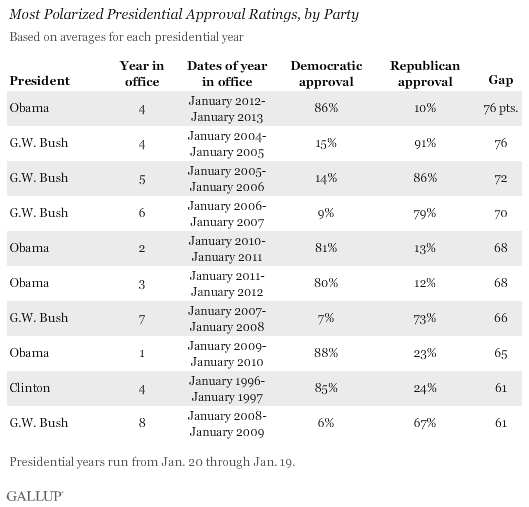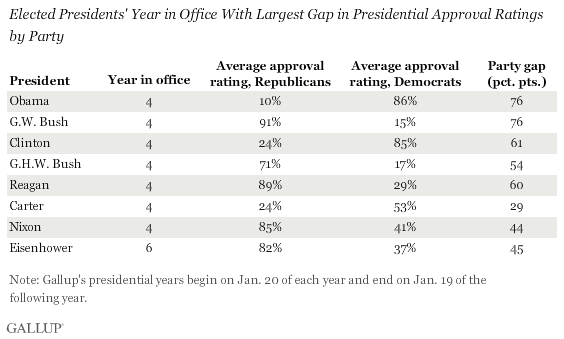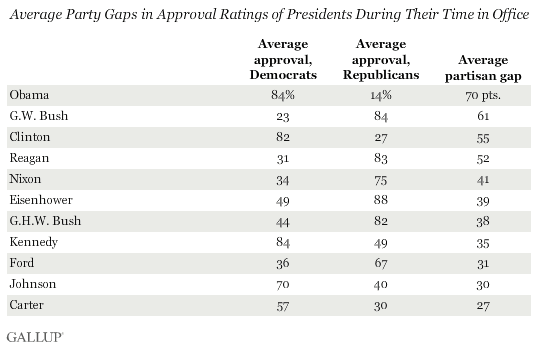PRINCETON, NJ -- During his fourth year in office, an average of 86% of Democrats and 10% of Republicans approved of the job Barack Obama did as president. That 76-percentage-point gap ties George W. Bush's fourth year as the most polarized years in Gallup records.

The list of most polarized years makes it clear that Obama's highly polarized ratings may be as much a reflection of the era in which he is governing as on Obama himself. The last nine presidential years -- the final five for Bush and Obama's first four -- all rank in the top 10. Thus, it appears that highly polarized ratings are becoming the norm, as Americans aligned with both parties are apparently not looking much beyond the president's party affiliation to evaluate the job he is doing.
Obama's record polarization last year also is owing to the electoral cycle. For most elected presidents, their fourth year in office -- the year all sought re-election -- was the most polarized year of their presidency. The election year likely causes Americans to view the president in more partisan terms, given his involvement in campaigning that year as well as the presence of an active opponent from the other party who is trying to defeat him. The lone exception to the pattern is Dwight Eisenhower, whose sixth year in office was his most polarized.

Obama on Pace to Be Most Polarizing President Yet
The average party gap in ratings of President Obama during the four years of his presidency is 70 percentage points. If that average holds, it would surpass Bush's record 61-point average polarization during his eight-year presidency by a considerable margin. Bush also finished his presidency with a significantly larger party gap in job approval ratings than the previous leader, Bill Clinton (55 points).

The trend toward increasingly partisan evaluations of presidents over time is also evident in the fact that no president before Ronald Reagan had more than a 41-point party gap in approval ratings, but four of the last five presidents (the exception is George H.W. Bush) have had better-than 50-point divisions in approval ratings by party.
Implications
Both Obama and his predecessor, George W. Bush, have made overtures toward bringing Americans together. The reality is that under both of their presidencies, Americans have been more politically divided than ever before. It is not clear how much of that is due to their governing styles and how much is just a reflection on how Americans approach politics and the presidency these days.
Regardless of the causes, the more polarized political environment certainly creates challenges for governing, as the president's ability to use the bully pulpit may be limited if a substantial minority of the population will ostensibly not support him almost regardless of what he proposes.
Given divided control of government, it may be especially important for the president and other government leaders to inspire Americans to pressure their representatives in Congress to act. And to move forward with legislation to address the nation's biggest issues, Americans and their elected representatives must be willing to both listen to the proposals of those in the other party and to accept compromise.
Explore President Obama's approval ratings in depth and compare them with those of past presidents in the Gallup Presidential Job Approval Center.
